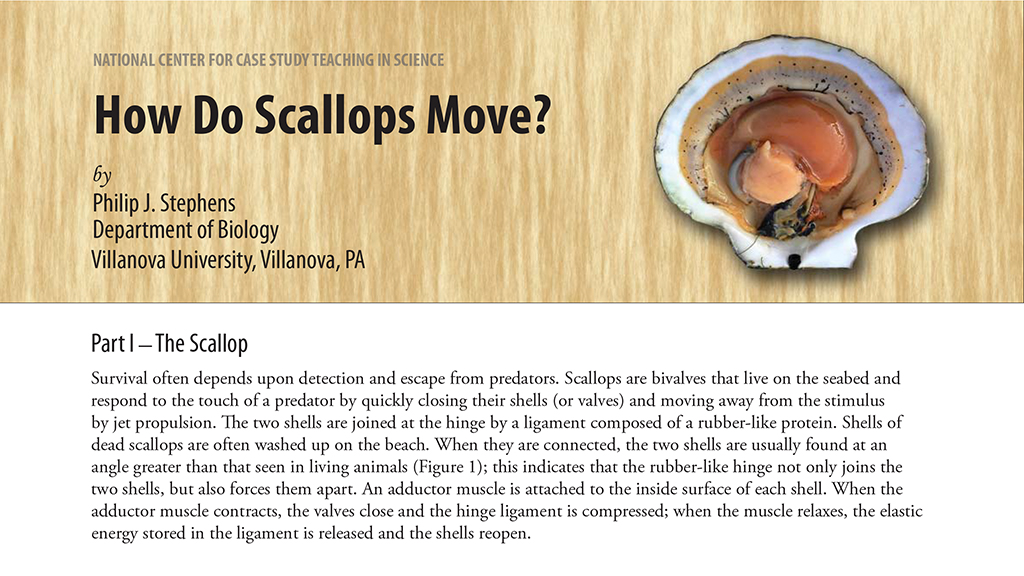Abstract
Scallops are bivalve mollusks that live on the seabed. This way of life makes them susceptible to predation and so they have evolved the ability to escape by swimming. This interrupted case study is based on a few observations and simple experiments which provide an opportunity in turn for students to develop their own hypotheses and experiments. Students will draw parallels between the vertebrate patella tendon reflex and the system that controls the rhythmic muscle contractions seen during scallop swimming. The case was designed for a one-semester animal physiology course taken by sophomore and junior science majors; it could also be used in a general biology course.



